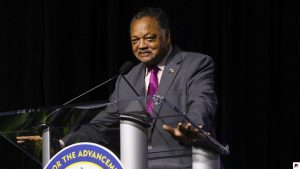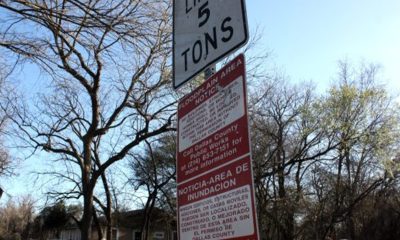Black History
COMMENTARY: Notes and Footnotes to a Life in Georgetown
WASHINGTON INFORMER — There is a visceral disregard and aggressive muting of the African-American presence in Old Georgetown.
By Thalia Nash-Mwaipaja
In the early ’80s, my mother, younger sister and I went to live with my uncle Rev. Dr. James K. McCants where he presided in the church clergy house in Old Georgetown. What would become my address, 2902 O Street Northwest, was owned and maintained by Mt. Zion United Methodist Church, the historic African American house of worship located just around the corner at 1334 29th Street Northwest. This move, from our East of the River house in Hillcrest (Southeast) to Georgetown represented, perhaps, the biggest and most pivotal change in my life.
I didn’t know a lot about the history of Old Georgetown, I only saw the difference in appearance, which was a totally different from the neighborhood I’d left. The sidewalks were made of red bricks or cobblestone and gave the community a type of quiet village charm. The atmosphere was always very tranquil, except on the outer layers of the neighborhood which catered to college revelry, happy hours, and shoppers. In this way, even as nightfall came, the residents of Georgetown maintained a mostly reserved, lights-out curfew of 10p.m. In a town known for blaring go-go music, an exhaustive nightlife, and a growing commuter system, it felt less and less like I was even in the District.
What I remember most fondly were the beautiful tree-lined streets for blocks with colorful flowers along the brick sidewalks. The corner stores were operated by one of two persons, and the neighbors were so well known that shop owners allowed residents to purchase things on a store tab, rather than at point of sale.

Thalia Nash-Mwaipaja revisited her Old Georgetown home recently with Washington Informer staff to discuss the love she maintains for the people and its history.
But by the late 1980s, I rarely saw African Americans in the neighborhood, except on Sundays for church services or on weeknights for occasional programs.
I remember my uncle telling me Mt. Zion was one of the oldest Black congregations in Northwest Washington, and that many of the members consisted of families that once resided in Georgetown – with only a handful continuing to reside in their Georgetown homes not far from the church. Through generations many of the members still attended services and made up large populations of active church members.
Living in Old Georgetown gave me an opportunity to experience a different type of diversity. I was able to attend Woodrow Wilson Senior High which was touted as an exemplary academic space and one that welcomed the children of our nation’s various embassies. In this way, the diversity I experienced as one of only a few African Americans living in Georgetown also spanned to include friendships with families whose surnames included: Shah, Li, Aragona, Ahmadu, Blesendorff, and Iloabachie. Many of these friends discussed how Black builders had to use their fingers to mold and manipulate materials for brickmaking / bricklaying. They challenged me to walk my neighborhood and examine the many African, Negro, Black, African-American fingerprints — locked in stone and pressed into the flesh of architecture of our ancestors.
Initially my friends knew more about the rich heritage of Black Georgetown than I did – which lead me to bend the ears of those around me for constant signs of heritage and “belonging” in a place that while quiet and reserved, maintained a healthy suspicion of Black bodies.
For instance, one of the most telling misfortunes of being whitewashed from a place while you’re living in it, was the anxiety white neighbors felt at having me in what they perceived to be “their space.” I always understood the angry or confused looks, or even the slow police cruiser trailing my cousin (my uncle’s older son) and me to see where we were going, at the behest of “concerned neighbors,” as an indication of their xenophobia or emotional insecurity. We often laughed at white newcomers to Old Georgetown who didn’t understand that their homes were once occupied by and served as the birthing rooms of the very people they now feared. It didn’t matter that the families no longer dwelled in the community, the houses still held their memories.
Since I married and moved away from Old Georgetown, my desire to reaffirm the family-ties of Black Georgetowners has reached a critical level. There is a visceral disregard and aggressive muting of the African-American presence in Old Georgetown. That separation between what lies beneath the surface and what lies in front of us should be bridged by school curriculum, the city’s historical societies, archivists, and historians. Washingtonians of all ages should be taught the history of a place that was once a refuge for slaves escaping the Deep South, as a vibrant Black economic hub courting generational affluence, and as a place where those who did it, remain interred. I am ever grateful to The Washington Informer Newspaper and The Washington Informer Charities for their efforts to bring this history to life through their annual African American Heritage Tour. It will absolutely make a difference in the lives of participants.
This article originally appeared in the Washington Informer.
Activism
Oakland Post: Week of April 17 – 23, 2024
The printed Weekly Edition of the Oakland Post: Week of April 17 – 23, 2024

To enlarge your view of this issue, use the slider, magnifying glass icon or full page icon in the lower right corner of the browser window. ![]()
Black History
Matthew Henson: Explorer Extraordinaire
Matthew Henson, a trailblazing explorer who overcame countless obstacles to leave an incredible mark on history. Born on August 8, 1866, in Charles County, Maryland, his journey is a testament to the power of determination and the spirit of adventure.

By Tamara Shiloh
Matthew Henson, a trailblazing explorer who overcame countless obstacles to leave an incredible mark on history. Born on August 8, 1866, in Charles County, Maryland, his journey is a testament to the power of determination and the spirit of adventure.
Henson’s life began amidst the backdrop of post-Civil War America, where opportunities for African Americans were scarce. From a young age, he possessed an insatiable curiosity about the world beyond his small town. At the age of 12, he embarked on a journey that would change the course of his life forever when he joined a merchant ship as a cabin boy.
His most famous expedition was his journey to the Arctic with renowned explorer Robert E. Peary. In 1887, Henson joined Peary’s crew as a seaman and quickly proved himself to be invaluable with his skills as a navigator and craftsman. Over the course of several expeditions, Matthew endured extreme cold, treacherous terrain, and grueling conditions as he and Peary sought to reach the elusive North Pole.
In 1908–09, Peary set out on his eighth attempt to reach the North Pole. It was a big expedition, with Peary planning to leave supplies along the way. When he and Henson boarded their ship, the Roosevelt, leaving Greenland on August 18, 1909, they were joined by a large group. This included 22 Inuit men, 17 Inuit women, 10 children, 246 dogs, 70 tons of whale meat, blubber from 50 walruses, hunting gear, and tons of coal.
In February, Henson and Peary left their anchored ship at Ellesmere Island’s Cape Sheridan, along with the Inuit men and 130 dogs. They worked together to set up a trail and supplies along the way to the Pole.
Peary picked Henson and four Inuit people to join him in the final push to the Pole. However, before they reached their destination, Peary couldn’t walk anymore and had to ride in a dog sled. He sent Henson ahead to scout the way. In a later interview with a newspaper, Henson recalled being in the lead and realizing they had gone too far. The group turned back, and Henson noticed his footprints helped guide them to their destination. At that location, Henson planted the American flag.
Henson’s legacy extends far beyond his expeditions to the Arctic. He shattered racial barriers in the world of exploration and inspired countless individuals, regardless of race, to dream big and pursue their passions. In 1937, he was finally recognized for his achievements when he was inducted into The Explorers Club, an organization dedicated to promoting scientific exploration and field research.
Matthew Henson died in the Bronx, New York, on March 9, 1955, at the age of 88.
Art
Marin County: A Snapshot of California’s Black History Is on Display
The Marin County Office of Education, located at 1111 Las Gallinas Ave in San Rafael, will host the extraordinary exhibit, “The Legacy of Marin City: A California Black History Story (1942-1960),” from Feb. 1 to May 31, 2024. The interactive, historical, and immersive exhibit featuring memorabilia from Black shipyard workers who migrated from the South to the West Coast to work at the Marinship shipyard will provide an enriching experience for students and school staff. Community organizations will also be invited to tour the exhibit.

By Post Staff
The Marin County Office of Education, located at 1111 Las Gallinas Ave in San Rafael, will host the extraordinary exhibit, “The Legacy of Marin City: A California Black History Story (1942-1960),” from Feb. 1 to May 31, 2024.
The interactive, historical, and immersive exhibit featuring memorabilia from Black shipyard workers who migrated from the South to the West Coast to work at the Marinship shipyard will provide an enriching experience for students and school staff. Community organizations will also be invited to tour the exhibit.
All will have the opportunity to visit and be guided by its curator Felecia Gaston.
The exhibit will include photographs, articles and artifacts about the Black experience in Marin City from 1942 to 1960 from the Felecia Gaston Collection, the Anne T. Kent California Room Collection, The Ruth Marion and Pirkle Jones Collection, The Bancroft Library, and the Daniel Ruark Collection.
It also features contemporary original artwork by Chuck D of the Rock and Roll Hall of Fame group Public Enemy, clay sculptures by San Francisco-based artist Kaytea Petro, and art pieces made by Marin City youth in collaboration with Lynn Sondag, Associate Professor of Art at Dominican University of California.
The exhibit explores how Marin City residents endured housing inequities over the years and captures the history of plans to remove Black residents from the area after World War II. Throughout, it embodies the spirit of survival and endurance that emboldened the people who made Marin City home.
Felecia Gaston is the author of the commemorative book, ‘A Brand New Start…This is Home: The Story of World War II Marinship and the Legacy of Marin City.’ Thanks to the generous contribution of benefactors, a set of Felecia’s book will be placed in every public elementary, middle, and high school library in Marin.
In addition, educators and librarians at each school will have the opportunity to engage with Felecia in a review of best practices for utilizing the valuable primary sources within the book.
“Our goal is to provide students with the opportunity to learn from these significant and historical contributions to Marin County, California, and the United States,” said John Carroll, Marin County Superintendent of Schools.
“By engaging with Felecia’s book and then visiting the exhibit, students will be able to further connect their knowledge and gain a deeper understanding of this significant historical period,” Carroll continued.
Felecia Gaston adds, “The Marin County Office of Education’s decision to bring the Marin City Historical Traveling Exhibit and publication, ‘A Brand New Start…This is Home’ to young students is intentional and plays a substantial role in the educational world. It is imperative that our community knows the contributions of Marin City Black residents to Marin County. Our youth are best placed to lead this transformation.”
The Marin County Office of Education will host an Open House Reception of the exhibit’s debut on Feb. 1 from 4 p.m. – 6 p.m.. All school staff, educators, librarians, and community members are encouraged to attend to preview the exhibit and connect with Felecia Gaston. To contact Gaston, email MarinCityLegacy@marinschools.org
-

 Activism4 weeks ago
Activism4 weeks agoOakland Post: Week of March 20 – 26, 2024
-

 #NNPA BlackPress3 weeks ago
#NNPA BlackPress3 weeks agoCOMMENTARY: D.C. Crime Bill Fails to Address Root Causes of Violence and Incarceration
-

 #NNPA BlackPress4 weeks ago
#NNPA BlackPress4 weeks agoFrom Raids to Revelations: The Dark Turn in Sean ‘Diddy’ Combs’ Saga
-

 #NNPA BlackPress3 weeks ago
#NNPA BlackPress3 weeks agoMayor, City Council President React to May 31 Closing of Birmingham-Southern College
-

 #NNPA BlackPress4 weeks ago
#NNPA BlackPress4 weeks agoCOMMENTARY: Lady Day and The Lights!
-

 Activism3 weeks ago
Activism3 weeks agoOakland Post: Week of March 27 – April 2, 2024
-

 #NNPA BlackPress4 weeks ago
#NNPA BlackPress4 weeks agoBaltimore Key Bridge Catastrophe: A City’s Heartbreak and a Nation’s Alarm
-

 #NNPA BlackPress4 weeks ago
#NNPA BlackPress4 weeks agoBaltimore’s Key Bridge Struck by Ship, Collapses into Water













































